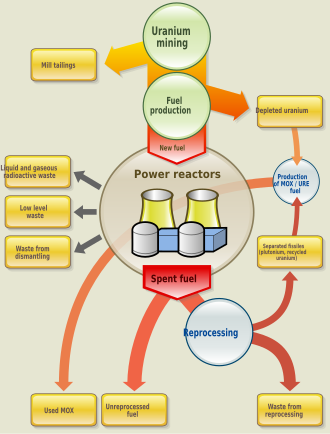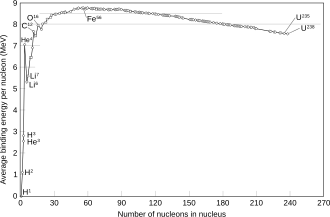
Back وقود نووي Arabic Nüvə yanacağı Azerbaijani Ядзернае паліва Byelorussian Ядзернае паліва BE-X-OLD Ядрено гориво Bulgarian Combustible nuclear Catalan Jaderné palivo Czech Нуклонсарла хуткăç CV Kernebrændsel Danish Kernbrennstoff German



Nuclear fuel is material used in nuclear power stations to produce heat to power turbines. Heat is created when nuclear fuel undergoes nuclear fission.
Most nuclear fuels contain heavy fissile actinide elements that are capable of undergoing and sustaining nuclear fission. The three most relevant fissile isotopes are uranium-233, uranium-235 and plutonium-239. When the unstable nuclei of these atoms are hit by a slow-moving neutron, they frequently split, creating two daughter nuclei and two or three more neutrons. In that case, the neutrons released go on to split more nuclei. This creates a self-sustaining chain reaction that is controlled in a nuclear reactor, or uncontrolled in a nuclear weapon. Alternatively, if the nucleus absorbs the neutron without splitting, it creates a heavier nucleus with one additional neutron.
The processes involved in mining, refining, purifying, using, and disposing of nuclear fuel are collectively known as the nuclear fuel cycle.
Not all types of nuclear fuels create power from nuclear fission; plutonium-238 and some other isotopes are used to produce small amounts of nuclear power by radioactive decay in radioisotope thermoelectric generators and other types of atomic batteries.
Nuclear fuel has the highest energy density of all practical fuel sources.
© MMXXIII Rich X Search. We shall prevail. All rights reserved. Rich X Search